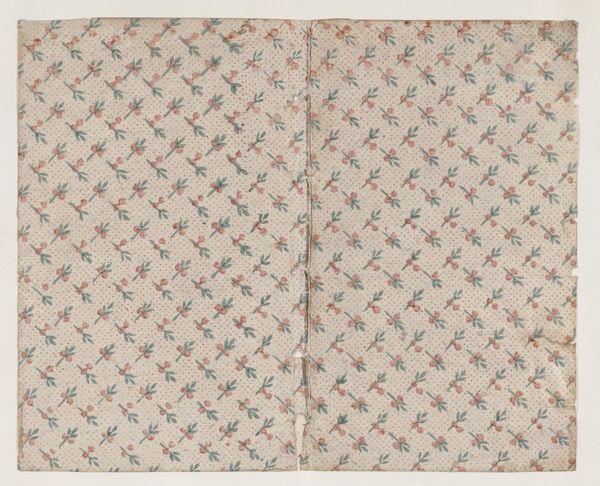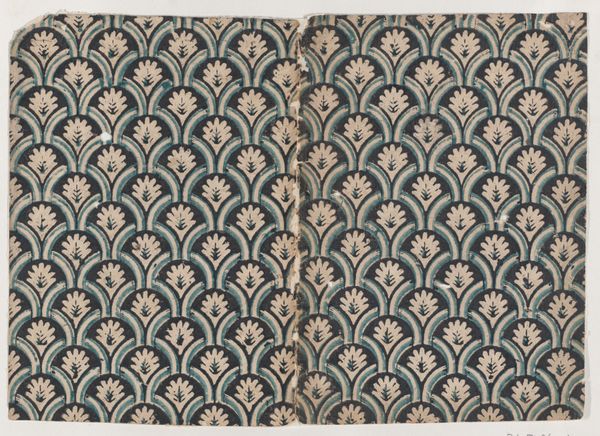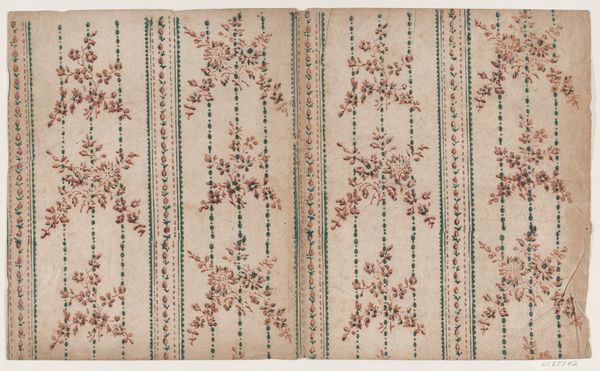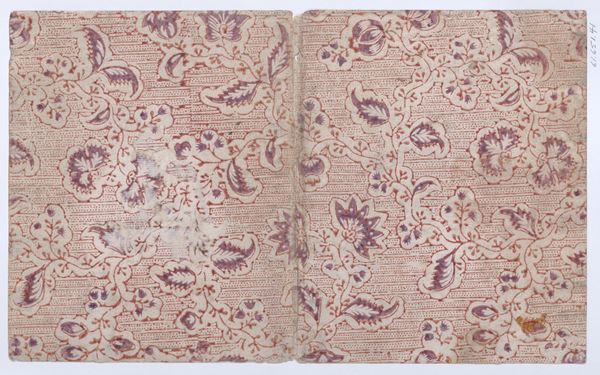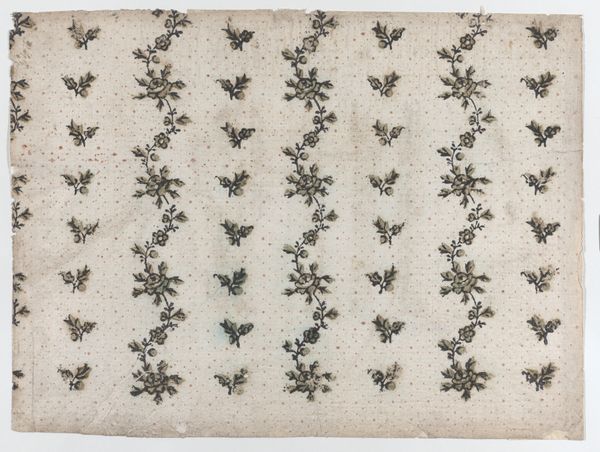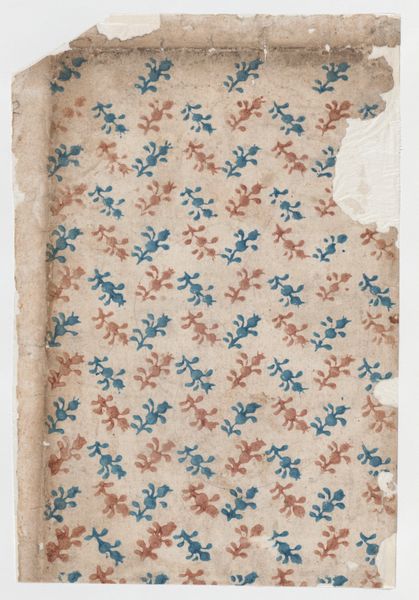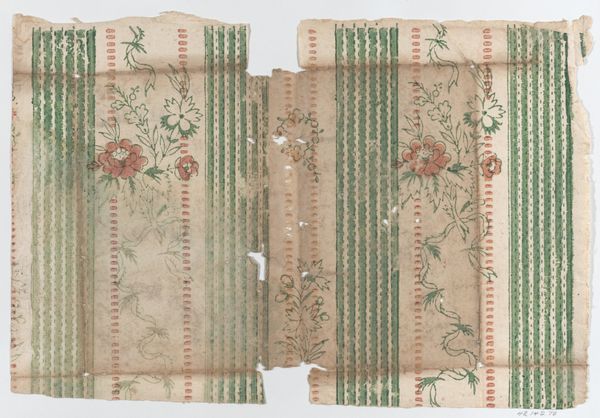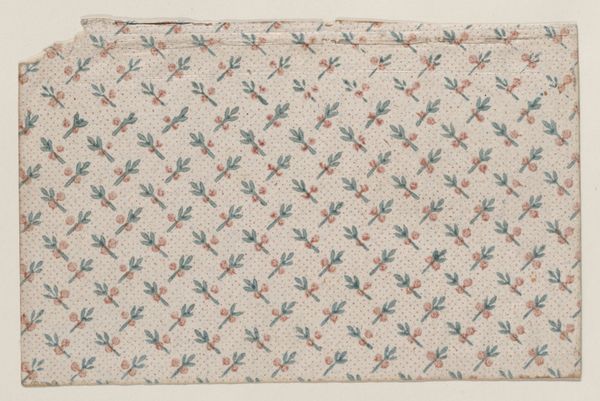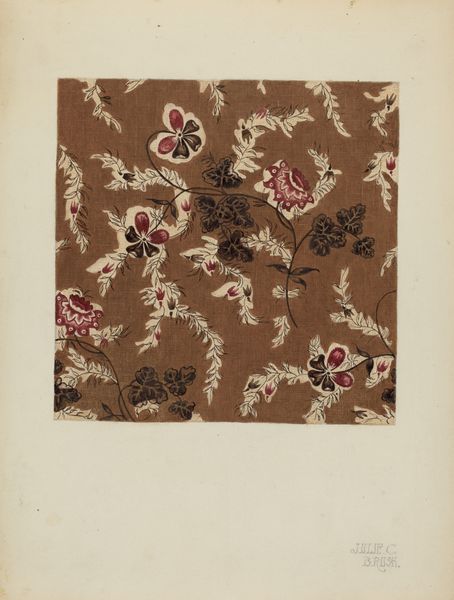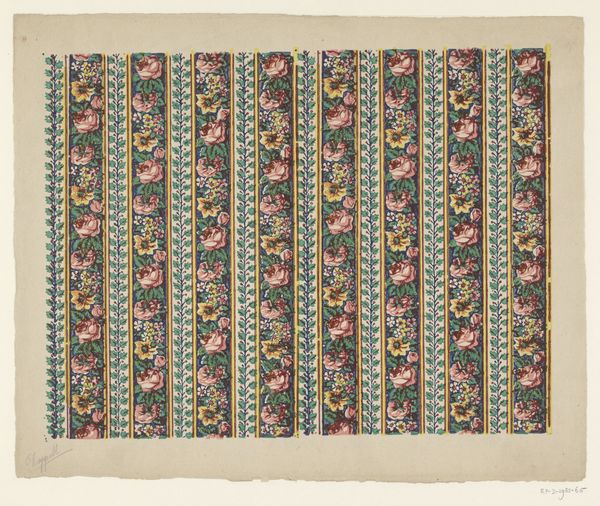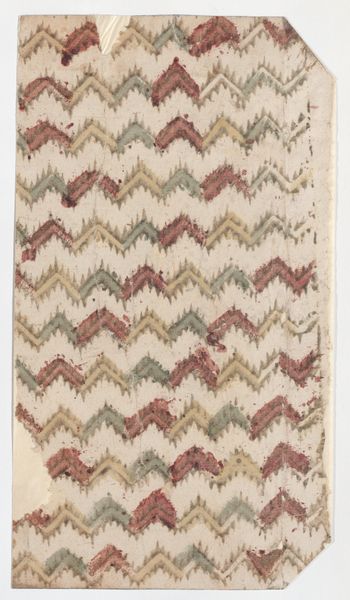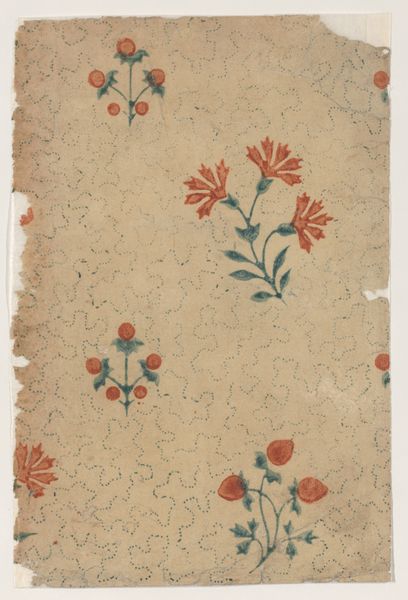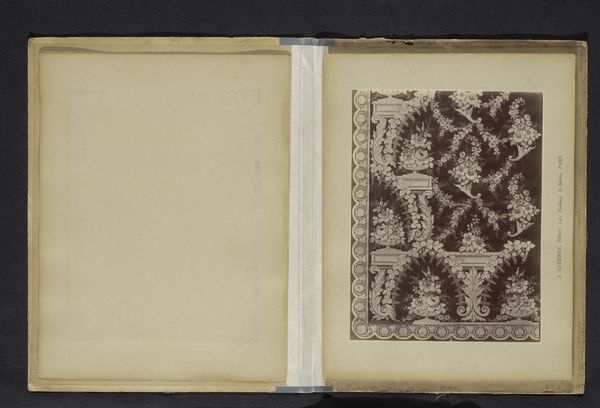
drawing, print
#
drawing
#
water colours
# print
#
coloured pencil
#
ink colored
#
sketchbook drawing
#
watercolour bleed
#
watercolour illustration
#
imprinted textile
#
mixed medium
#
sketchbook art
#
watercolor
Dimensions: Sheet: 7 13/16 × 9 7/16 in. (19.8 × 24 cm)
Copyright: Public Domain
Editor: This is an intriguing sketchbook sheet titled "Sheet with overall dot and floral pattern," created sometime between 1775 and 1875 by an anonymous artist. It's currently housed at The Met. The delicate floral pattern evokes a sense of tranquility, yet the repetitive dots give it an almost unsettling uniformity. What strikes you about this piece? Curator: The repetition is key, isn’t it? And notice how each floral element, though similar, possesses slight variations. It suggests a cultural memory of nature filtered through the lens of industrialization. The printed textile speaks of the democratization of design, making patterns accessible. Does this signify the natural world being tamed, made palatable for a rapidly changing society? The anonymous nature of the artist adds another layer. Whose story is this pattern telling, and for whom? Editor: That’s a thought-provoking point! I hadn't considered the democratisation aspect and industrialization influence. So you see the individual floral elements almost as resisting that industrial taming? Curator: Perhaps not resisting, but carrying within them the echo of individuality within a collective. Floral patterns have, throughout history, symbolized fertility, growth, and beauty. How do these symbolic meanings change when mechanically reproduced? This seemingly simple design reflects deeper societal shifts. How might viewers at the time have experienced the blend of handmade aesthetic and mass-produced possibilities? Editor: It really pushes me to think about how much an object’s meaning can be transformed through its method of creation. I see the textile world and access to design in a completely new light! Curator: Exactly! The convergence of art, craft, and industry shapes our cultural narrative in fascinating ways. We should not disregard those ‘minor’ arts.
Comments
No comments
Be the first to comment and join the conversation on the ultimate creative platform.
